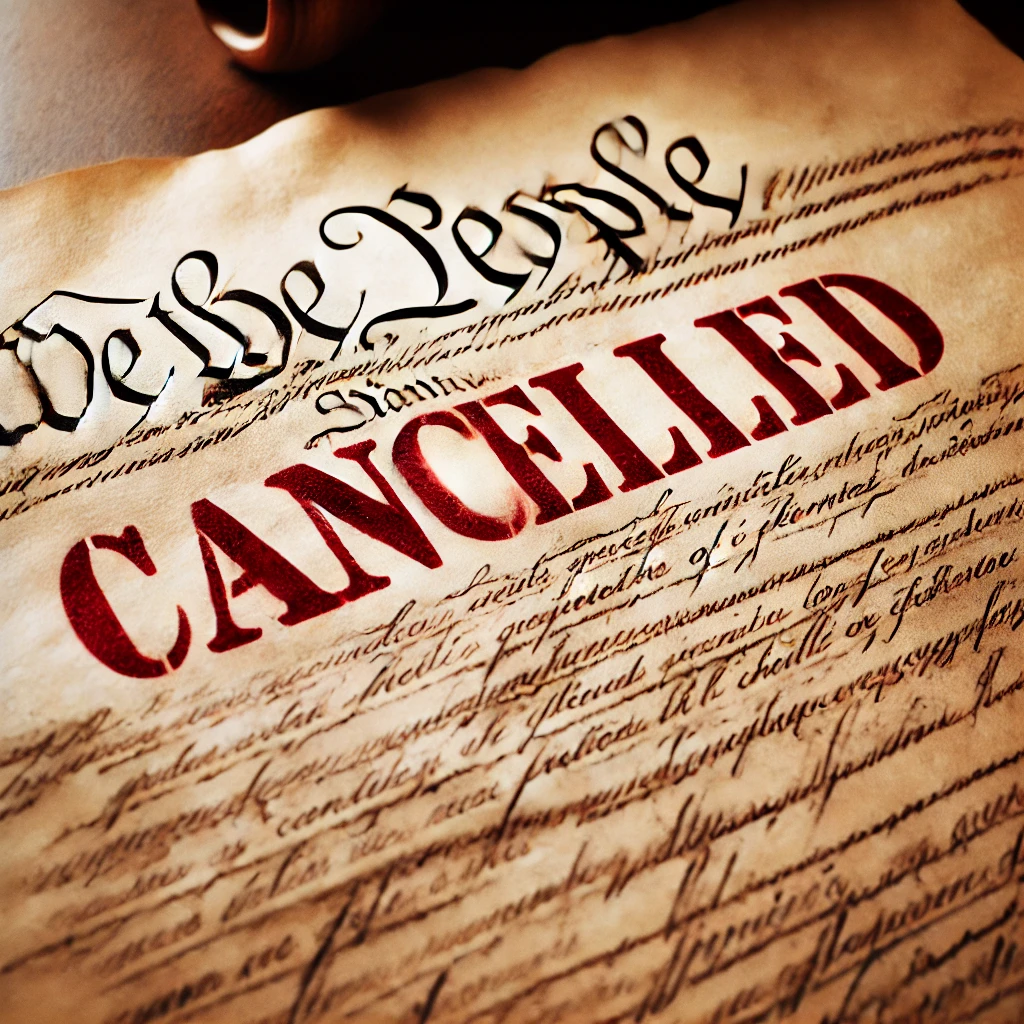
Part II
Introduction
In Part 1 of a Path to Recovery I recommended that the Democrats return to the grassroots level. I believe that they should focus on state and local races and refine a message that appeals to the general population. They’ve been unsuccessful in their top-down approach. Let’s take a look at where they could go from there.
Acknowledge the Need for Change
The first step toward recovery is an honest assessment of what went wrong. Ignoring electoral losses or solely blaming external factors without self-reflection is a common pitfall. I already see some of this finger pointing and blame deflection going on as I read about various Democrats’ responses to the election. For example, Sheila Nix, Vice President Kamala Harris’ chief of staff, stated during a summit at Harvard University that Harris ran a “pretty flawless campaign”. If it had been flawless, she would have won.
After their 2012 election loss, the Republican Party conducted a comprehensive analysis, resulting in the “Growth and Opportunity Project” report. This internal review highlighted areas for improvement, including outreach to minority communities and the need for a clearer economic message.
For Democrats, a similar post-mortem analysis could prove invaluable. By examining voter data, exit polls, and demographic shifts, the party can identify why key groups, such as working-class voters, Latinos, young men, and suburbanites, may have turned away. Addressing these issues directly and transparently can rebuild trust and demonstrate the party’s seriousness about listening to voters’ concerns.
Beyond incremental reforms, Democrats must embrace bold, transformative policies that resonate with voters who feel left behind by the current system. The party needs to develop a compelling identity focused on concrete, tangible improvements in people’s lives rather than abstract ideals.
Reevaluate Economic Messaging and Focus on the Working Class
Economic anxiety remains a powerful driver of voter behavior. While Democrats have traditionally been seen as the party of the working class, recent elections reveal erosion in this support, particularly among white, non-college-educated voters. In 2024, exit polls indicated that economic issues, such as inflation and job security, were top concerns for many voters.
To reconnect, Democrats need to sharpen their economic message. A strong focus on job creation, wage growth, and small business support can resonate with those alienated by a perceived focus on identity politics. Franklin D. Roosevelt’s New Deal is a historical example of pivoting toward a broad, economically focused coalition. A modern equivalent could involve targeted investments in infrastructure, clean energy jobs, family farm support, and small business relief.
Bridge the Urban-Rural Divide
One significant challenge for Democrats is the growing urban-rural divide. While the party finds success in urban areas, it struggles to maintain support in rural and suburban communities. In states like Ohio and Pennsylvania, losses in rural counties often outweigh gains in urban centers, tipping closely contested races.
Reaching rural voters requires more than policy proposals; it demands a cultural shift in communication. Democrats could emphasize issues directly impacting these communities, such as healthcare access, rural broadband expansion, job protection and development, and agricultural support. Joe Biden’s modest gains among rural voters in 2020 suggest that sustained effort could lead to further inroads.
Rebuild the Coalition and Energize Young and Minority Voters
The Democratic Party’s success has historically hinged on its ability to build a diverse coalition of young voters, minorities, women, and progressives. However, recent trends indicate waning enthusiasm among these groups, particularly younger voters disillusioned with incremental policy changes and the slow pace of progress on climate change and student debt relief. There is also significant concern about job availability and long-term financial stability among young voters.
Mobilizing less-engaged voters, especially in non-presidential election years, is crucial. Grassroots organizing, like Barack Obama’s 2008 campaign strategy, could prove effective. Meeting voters where they are, both online and in their communities, and addressing their key concerns can reinvigorate this coalition. In the recent presidential election, the Republicans made a focused effort on less-engaged voters. This was particularly effective in Arizona where it may have made the difference in shifting the state to Donald Trump.
Simplify the Policy Agenda and Focus on Clear, Unifying Issues
A common criticism of Democratic campaigns is that their platform can appear fragmented, with overwhelming attention to niche issues. Democrats should consider rallying around a few key issues with broad appeal, such as healthcare reform, economic fairness, job creation, and climate action.
Bill Clinton’s 1992 campaign slogan, “It’s the economy, stupid,” streamlined messaging and maintained focus on voters’ primary concerns. This year the Republicans were successful with a variation of this message.
Democrats today might focus on reducing prescription drug costs, enhancing mental health services, and promoting job-centered climate policy to unite progressive and moderate wings.
Invest in Digital Strategy and Combat Misinformation
The shift to digital campaigning has fundamentally changed electoral dynamics. While Democrats historically led in digital strategy, Republicans have closed the gap, excelling in targeted ads and social media engagement. In fact, during the last election the Republicans generally ignored traditional media going directly to social media where they could spread their message without critical evaluation or fact-checking.
To regain their edge, Democrats need to invest in data analytics, targeted outreach, and robust real time fact-checking to combat misinformation. They must have a group dedicated to continuously monitor and respond to social media campaigns. A strong digital presence can engage younger, tech-savvy voters with clear messaging that rapidly counters disinformation.
Conclusion: A Resilient Path Forward
Recovering from electoral defeat requires adapting, evolving, and embracing change. Continuing to attempt to respond to every special interest group will continue to alienate a majority of voters. This is not something many progressive Democrats want to consider. However, by focusing on economic issues, bridging cultural divides, re-energizing their traditional coalition, and investing in grassroots and state-level efforts, Democrats can lay the groundwork for future success.
History shows that political parties rebound when they listen to voters and refine their strategies. The road ahead will be challenging; the Democratic Party has been trapped in an echo chamber of progressive demands.
By developing a clear vision and a commitment to addressing a diverse electorate’s needs, the Democratic Party can reposition itself as a champion of the people. The key will be finding a balance between the aspirations of its current base and the practical concerns of everyday Americans who once were its base.























Why We Make Promises to Ourselves Every January
By John Turley
On December 28, 2024
In Commentary
The History of New Year’s Resolutions
New Year’s resolutions—a practice where individuals set goals or make promises to improve their lives in the upcoming year—have a rich and varied history spanning thousands of years. While the concept of self-improvement at the start of a new year feels modern, its origins are deeply rooted in ancient civilizations and religious traditions.
Origins of New Year’s Resolutions
The tradition of making promises at the start of a new year can be traced back over 4,000 years to the Babylonians. During their 12-day festival, Akitu, held in mid-March to coincide with the spring harvest, they made vows to their gods to repay debts and return borrowed items. Success in fulfilling these promises was believed to curry favor with the deities.
When Julius Caesar reformed the Roman calendar and established January 1 as the start of the new year, the practice took on a more formal tone. January was named after Janus, the two-faced Roman god of beginnings and endings. Romans offered sacrifices to Janus and made promises of good behavior for the coming year, reflecting on the past and looking forward to the future.
By the Middle Ages, the focus shifted to religious observances. In early Christianity, the first day of the year was often a time of prayer, reflection, and making pious resolutions. One of the most interesting New Year’s traditions was the “Peacock Vow”. Christian Knights would reaffirm their commitment to chivalry at the end of the Christmas season and vow good behavior and chivalric deeds during the coming year. The vow was taken while eating roast Peacock at a New Year’s celebration.
In the 17th century, Puritans made revolutions that focused on spiritual and moral improvement. Common resolutions included commitments to avoid pride and vanity, practice charity and liberality, refrain from revenge, control anger, speak no evil of others, and live a life aligned with religious principles. They also resolved to study scriptures diligently, improve religious devotion weekly and renewed their dedication to God.
In 1740, John Wesley, founder of Methodism, created the Covenant Renewal Service, held on New Year’s Eve or Day. These gatherings encouraged reflection on the past year and resolutions for spiritual growth.
The first known use of the phrase “New Year’s Resolution” was in a Boston newspaper, Walker’s Hibernian Magazine, in 1813. The article humorously discussed people breaking their New Year’s vows almost as soon as they made them. It would appear nothing much has changed over the last 221 years.
The Modern Evolution of New Year’s Resolutions
The secularization of New Year’s resolutions began in the 19th and 20th centuries, with self-improvement and personal growth taking precedence over religious vows. The rise of print media helped popularize the practice, with newspapers and magazines publishing advice on how to set and achieve goals. By the 21st century, resolutions were firmly embedded in Western culture as a tradition of hope and renewal.
Common New Year’s Resolutions
Resolutions tend to reflect cultural priorities and individual aspirations. A survey of common resolutions reveals recurring themes:
Health and Fitness:
Personal Development:
Financial Goals:
Relationships and Community:
Breaking Bad Habits:
The Success Rate of Resolutions
Despite their popularity, New Year’s resolutions are notoriously hard to keep. Studies estimate that about 80% of resolutions fail by February, often due to overly ambitious goals or lack of specific planning. However, setting realistic, measurable, and time-bound goals (e.g., SMART goals) can improve success rates. It seems that most people approach their New Year’s resolutions more for fun than with any anticipation that they will be kept.
The Significance of Resolutions Today
New Year’s resolutions persist because they align with a universal desire for self-improvement and fresh starts. Whether rooted in ancient traditions or modern goal-setting frameworks, they represent a belief in the potential for change, even if it takes a bit of effort to achieve.
My personal New Year’s resolution is to increase The Grumpy Doc’s subscribers to 50. Then I’ll only need 9950 more to be able to attract advertisers. $$$$$
Sources: